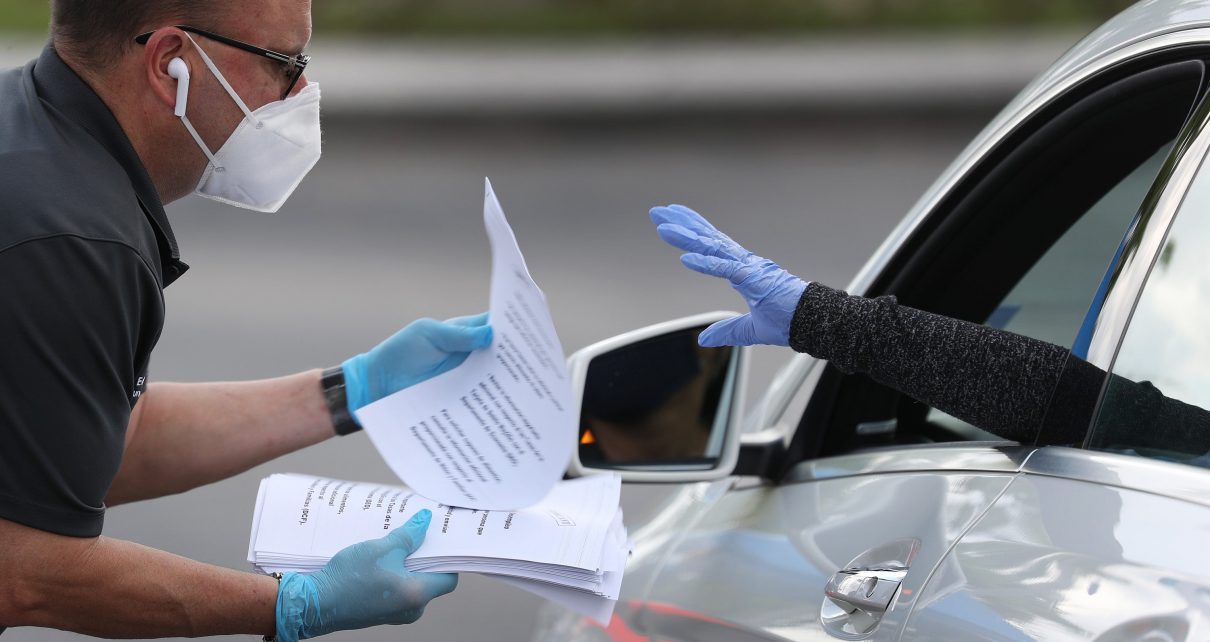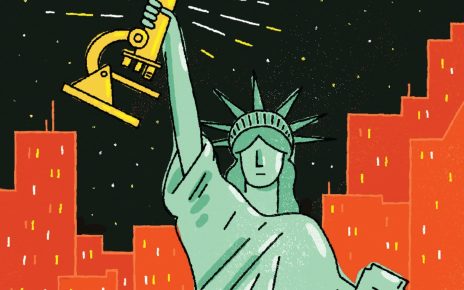The coronavirus pandemic continues to wreak havoc across the United States. To tamp down community spread of the virus, most states have issued complete or partial “stay-at-home” orders.
The economy has convulsed under these restrictions. Goldman Sachs has estimated that the gross domestic product (GDP) will decrease 24 percent in the second quarter of 2020. According to the latest unemployment data, nearly 22 million Americans have lost their jobs in four weeks—which may be an underestimate, as labor offices have been flooded by claims.
To attenuate these economic shocks, the government passed the $2 trillion Coronavirus Aid, Relief, and Economic Security (CARES) Act. However, policies around expansion of health insurance—which over half of Americans receive through their jobs—were left untouched.
As the country continues to grapple with the near and long-term repercussions of coronavirus, the consequences of lost health insurance are likely to dramatically effect individuals, healthcare systems, and state governments in the coming months.
MANY AMERICANS LACK ALTERNATIVE INSURANCE
The sudden unemployment crisis exposes a key deficit in the U.S. health care system: the fact that, for 165 million Americans, their access to medical care depends on their jobs. Indeed, updating the Economic Policy Institute’s (EPI) estimates, 8.8 million Americans have lost their employer-sponsored coverage in the past four weeks.
Some fraction of these can receive coverage through employed spouses. However, many employers charge spousal surcharges at an incremental $400 per month—consuming one seventh of the median monthly income for spouses still employed.
Another fraction can access coverage through Special Enrollment Period (SEP) exemptions or the Consolidated Omnibus Budget Reconciliation Act (COBRA). However, SEPs are challenging to navigate, and only 11 states have made SEPs more flexible amidst COVID-19. While COBRA more seamlessly continues coverage, the newly unemployed bear the full cost burden—averaging $599 per month in 2019. This constitutes at least one third of monthly unemployment income (after four months of CARES stipends).
A final fraction may be eligible for Medicaid. However, 28 percent of states have not yet expanded Medicaid, making many newly unemployed individuals ineligible. Meanwhile, these states have disproportionately high unemployment rates—meaning the worst may be yet to come for Americans living there.
WIDESPREAD VULNERABILITIES
The St. Louis Fed has estimated that 47 million Americans may lose their jobs before COVID-19 dissipates. Using the EPI’s estimates, 18.9 million Americans will become uninsured—almost entirely wiping out the coverage gains made by the Affordable Care Act. Should reality approximate these figures, the implications for patients, health care systems and states will be significant.
Patients in states with Medicaid expansion will be the best off. However, Medicaid enrollment takes a month and a half or more—these individuals remain uninsured until then. In states without Medicaid expansion, individuals will pay enormous amounts for premiums—not to mention co-payments or deductibles costing thousands of dollars annually. Or they too will go uninsured.
As such, regardless of insurance status, in order to avoid unaffordable medical bills (which may contribute to more than 60 percent of U.S. bankruptcies), many patients will defer care—even as cases and deaths from coronavirus are doubling every 3 days.
This suggests that our most economically vulnerable may become our most biologically vulnerable by delaying care for the mild fatigue and dry cough marking the early stages of coronavirus. Their loved ones and neighbors will share these risks—as failures to receive timely diagnosis and to undertake interventions like self-quarantine increase the risk of community spread.
The consequences of these coverage gaps are not limited to patients alone. Rural and safety-net health systems operating on paper-thin margins—and already “bleeding revenue” amid local coronavirus surges—may be pushed to the limit by an increasing fraction of uncompensated and poorly reimbursed care.
If mass unemployment in combination with the cost of treating coronavirus prompts mass shuttering of regional hospitals, the most vulnerable areas of the country may bear the greatest cost.
Lastly, states will feel the consequences of mass unemployment. 29 percent of state budgets are already devoted to Medicaid. States like New York—even before recent unemployment data—slashed Medicaid spending in desperate efforts to balance their budgets. The 36 states with Medicaid expansion will face amplified budgetary challenges moving forward (especially, as federal support fades).
Meanwhile, the residual 14 states will not be spared in the longer-term. They will likely absorb the health repercussions of mass unemployment through skyrocketing “Disproportionate Share Hospital” payments upon which safety-net hospitals rely. Unremitting health care inflation will, in turn, curtail states’ social welfare spending during a potentially prolonged recession.
URGENT HEALTH STIMULUS NEEDED
A set of health stimulus measures can protect these various stakeholders from the toxicities of mass unemployment.
The first set of measures defend against unemployment itself. Nearly half of states lack the funds to support unemployment insurance. Rather than funding welfare programs after unemployment, the U.S. government can follow the lead of countries such as Germany and Denmark in keeping small businesses afloat through grants and loans. This would keep employees insured under employer-sponsored plans.
The second set shield against the costs of health care. The federal government can institute new “bridge” plans offering coverage to the newly unemployed, structured to minimize cost-sharing and encourage primary care. Federal support would liberate states from the budgetary pressures of Medicaid, while also ensuring coverage of those in urgent need.
Alternatively, the federal government can provide stimulus funding directly to health savings accounts (inversely proportion to wealth), to encourage use of healthcare for treatment of coronavirus, in the near-term—and to cushion the blow of health care costs arising from other conditions, in the longer-term.
The final set of measures can promote integrity of the health care system. Much like the Federal Reserve provided critical liquidity for the financial system amidst the previous recession—the solvency of the health care system must be ensured during the present recession. A national entity providing short-term loans to healthcare institutions can support the capital transformations needed to provide care for surging coronavirus caseloads. Just as the 2008 efforts made credit broadly accessible to Americans during their time of financial need, these efforts would make care broadly accessible to Americans during their time of medical need.
For the foreseeable future, social interventions essential to preventing the spread of coronavirus will present major economic challenges, including widespread unemployment. Rethinking how we fund health care in this country is urgently needed to protect the lives and livelihoods of Americans.




